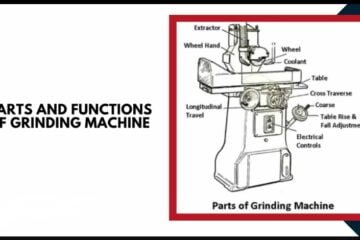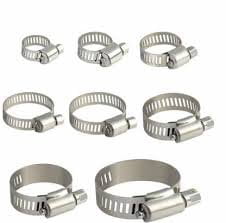what is accelerometer ?
An accelerometer is a device that measures acceleration. It is commonly used in various applications to detect changes in velocity or direction of an object. The device typically consists of a mass attached to a spring, which allows it to move in response to acceleration forces.
Accelerometers are widely utilized in technology, particularly in smartphones and other electronic devices. They enable features such as screen rotation, step counting, and motion-based gaming by detecting the orientation and movement of the device. In addition, accelerometers are used in automotive systems for stability control, airbag deployment, and impact detection.
The measurements provided by accelerometers are typically in units of acceleration, such as meters per second squared (m/s²) or gravitational units (g-force). They can detect acceleration along multiple axes, including the X, Y, and Z axes, allowing for comprehensive motion tracking in three-dimensional space.
Must Read : Gyroscope
accelerometer working principle

The working principle of an accelerometer is based on the concept of inertial forces. It utilizes the properties of mass and springs to measure acceleration.
Most commonly, accelerometers consist of a small mass suspended by one or more springs. When the accelerometer experiences acceleration, the mass resists the motion due to its inertia. This resistance generates a force that is proportional to the acceleration being applied.
To detect this force, accelerometers often employ a sensing element called a capacitive sensor. This sensor consists of two plates: one attached to the mass and the other to a fixed frame. The distance between these plates changes as the mass moves in response to acceleration, altering the capacitance between the plates.
As the capacitance changes, the accelerometer converts it into an electrical signal. This signal is then processed and interpreted to determine the acceleration being experienced by the device. This can be achieved through various methods, such as using an electronic circuit that measures the changes in capacitance and converts them into a corresponding voltage or digital output.
In some accelerometers, piezoelectric materials are used instead of capacitive sensors. Piezoelectric materials generate an electric charge when subjected to mechanical stress. When the accelerometer experiences acceleration, the mass applies a mechanical stress on the piezoelectric material, which produces an electrical charge proportional to the applied acceleration.
By measuring the resulting electrical signal, accelerometers can accurately determine the magnitude and direction of acceleration along different axes. This information is then used for various applications, including motion detection, orientation sensing, and vibration analysis.
In summary, accelerometers work by utilizing the principles of inertia and measuring the effects of acceleration on a mass or piezoelectric material. Through the conversion of mechanical motion into electrical signals, they provide valuable information about the acceleration being experienced by an object or device.
how does accelerometer works ?
Accelerometers work based on the principle of measuring changes in acceleration using various sensing mechanisms. The most common type of accelerometer used in electronic devices, such as smartphones, is the MEMS (Microelectromechanical Systems) accelerometer. Here’s how it works:
- Microstructures: The accelerometer contains tiny microstructures made using microfabrication techniques. These structures include a proof mass (a small suspended mass), springs, and sensing elements.
- Inertial Forces: When the accelerometer experiences acceleration, the proof mass resists the motion due to its inertia. This resistance generates forces inside the device.
- Sensing Mechanism: The sensing mechanism in the accelerometer detects the forces generated by the proof mass. There are different types of sensing mechanisms used in accelerometers: a. Capacitive Sensing: This is the most common type. It consists of two sets of parallel plates: one attached to the proof mass and the other to a fixed frame. As the proof mass moves in response to acceleration, the distance between the plates changes, altering the capacitance. The change in capacitance is measured and converted into an electrical signal. b. Piezoelectric Sensing: Some accelerometers use piezoelectric materials that generate an electric charge when subjected to mechanical stress. When the proof mass moves due to acceleration, it applies stress on the piezoelectric material, producing an electrical charge proportional to the applied acceleration.
- Signal Processing: The electrical signal generated by the sensing mechanism is processed and interpreted by an electronic circuit. The circuit amplifies and filters the signal to extract the acceleration information accurately.
- Output: The processed signal provides information about the acceleration being experienced by the accelerometer along different axes. This information can be obtained as an analog voltage, a digital value, or a combination of both, depending on the accelerometer’s design.
By measuring the changes in acceleration, accelerometers can detect various types of motion, including linear acceleration, tilt, and vibration. They are used in a wide range of applications, such as screen rotation, step counting, navigation, and motion-based gaming, among others.
It’s important to note that while the above explanation focuses on MEMS accelerometers, there are other types of accelerometers as well, such as piezoresistive, magnetic, and optical accelerometers, each with its own working principles.
Types of Accelerometer
The 3 important types of accelerometers are capacitive MEMS accelerometer, piezoresistive accelerometer, and piezoelectric accelerometer
Indeed, there are several types of accelerometers commonly used in various applications. Three important types are:
- Capacitive MEMS Accelerometer: This type of accelerometer utilizes a capacitive sensing mechanism, as mentioned earlier. It consists of a proof mass suspended by springs, with capacitive plates attached to the proof mass and the fixed frame. When the accelerometer experiences acceleration, the displacement of the proof mass alters the capacitance between the plates, which is then measured to determine the acceleration.
- Piezoresistive Accelerometer: In a piezoresistive accelerometer, the sensing mechanism relies on the principle of piezoresistance. It consists of a proof mass attached to a beam or a diaphragm, which experiences stress or strain due to acceleration. This stress changes the resistance of piezoresistive elements (usually made of semiconductor materials) integrated into the structure. By measuring the changes in resistance, the accelerometer determines the applied acceleration.
- Piezoelectric Accelerometer: This type of accelerometer utilizes the piezoelectric effect. It consists of a mass attached to a piezoelectric material, such as quartz or certain ceramics. When subjected to acceleration, the mass exerts mechanical stress on the piezoelectric material, causing it to generate an electric charge. This charge is then measured and converted into an acceleration value.
These three types of accelerometers each have their advantages and are suitable for different applications. Capacitive MEMS accelerometers are widely used in consumer electronics due to their small size, low power consumption, and cost-effectiveness. Piezoresistive accelerometers are often employed in industrial applications where high accuracy and ruggedness are required. Piezoelectric accelerometers are commonly used in high-temperature environments and for measuring dynamic forces in applications such as vibration analysis and structural health monitoring.
It’s important to note that there are other types of accelerometers as well, such as magnetic accelerometers based on the Hall effect or magnetoresistive principles, and optical accelerometers that utilise the interference of light. Each type has its own unique working principle and advantages, allowing for a wide range of choices to suit specific application requirements.
Purpose of the Accelerometer
The purpose of an accelerometer is to measure and detect acceleration. Accelerometers are used to determine the changes in velocity or direction of an object or device. By measuring acceleration, they provide valuable information about the motion and movement of the object in real-time.
The primary purpose of accelerometers is to provide data on the acceleration forces acting upon an object along different axes. This information can be used for a variety of purposes, including:
- Motion Sensing: It is commonly used for motion sensing in applications such as screen rotation, tilt detection, and gesture recognition in smartphones, tablets, and gaming devices.
- Orientation and Position Tracking: By measuring changes in acceleration, accelerometers can determine the orientation and position of an object. They enable features like auto-rotation of screens, virtual reality head tracking, and inertial navigation systems.
- Impact and Vibration Analysis: It is utilized in impact and vibration analysis for structural monitoring, automotive crash detection, and industrial equipment health assessment. They help identify and analyze impacts, shocks, and vibrations experienced by objects or systems.
- Motion Detection and Activity Tracking: It is used in activity trackers, fitness devices, and sports equipment to track physical activities such as step counting, distance measurement, and calorie estimation. They enable the monitoring of movement and physical performance.
- Automotive Safety Systems: In automotive applications, It play a crucial role in safety systems. They are utilized in electronic stability control (ESC) systems, airbag deployment, rollover detection, and tire pressure monitoring, enhancing overall vehicle safety.
- Robotics and Automation: It is incorporated into robotic systems for motion control, balance, collision detection, and path planning. They enable robots to navigate and interact with their environment accurately.
- Structural Health Monitoring: It is used for monitoring vibrations and structural health in buildings, bridges, and other infrastructure. They help detect anomalies, assess structural conditions, and ensure the safety and integrity of structures.
- Seismic Monitoring: In seismology, It is utilized in seismometers to detect and measure ground motion during earthquakes and seismic events. They provide critical data for earthquake monitoring and research.
These are just a few examples of the purposes and applications of accelerometers. Overall, accelerometers play a vital role in various industries, technologies, and research fields, enabling precise measurement and monitoring of acceleration for a wide range of purposes.
application of accelerometer
Accelerometers have numerous applications across various industries and fields. Here are some common applications of accelerometers:
- Mobile Devices: It is extensively used in smartphones, tablets, and wearable devices. They enable features such as screen rotation, motion-based gaming, pedometer functions, and gesture recognition.
- Automotive: In the automotive industry, It play a vital role in safety and performance systems. They are used in electronic stability control (ESC) systems, airbag deployment, rollover detection, and tire pressure monitoring. Accelerometers also provide data for vehicle diagnostics and performance analysis.
- Aerospace and Aviation: It is utilized in aerospace applications for aircraft navigation, flight data recording, structural monitoring, and vibration analysis. They help measure acceleration forces during takeoff, landing, and turbulent conditions.
- Robotics: It is incorporated into robotic systems for balance and motion control. They enable robots to maintain stability, detect collisions, and adjust their movements based on acceleration data.
- Sports and Fitness: It is used in sports and fitness devices to track physical activities. They provide data for step counting, distance measurement, calorie tracking, and analyzing movement patterns in sports performance.
- Health Monitoring: It is employed in medical devices and wearables for monitoring patient movement and activity levels. They assist in fall detection, gait analysis, and tracking physical rehabilitation progress.
- Structural Health Monitoring: It is utilized to monitor vibrations and structural integrity in buildings, bridges, and other infrastructure. They help detect anomalies, assess structural conditions, and aid in preventive maintenance.
- Seismic Monitoring: It is essential in seismometers used for earthquake monitoring and research. They measure ground vibrations and seismic events, providing valuable data for seismological studies.
- Gaming and Virtual Reality: It is integrated into gaming controllers and virtual reality devices to track user movements and gestures, providing an immersive gaming experience.
- Industrial Applications: Accelerometers find applications in industrial machinery and equipment for monitoring vibrations, ensuring machine health, and detecting anomalies or failures.
These are just a few examples of the wide-ranging applications of accelerometers. Their ability to measure acceleration and detect motion makes them indispensable in various technological advancements, ensuring enhanced safety, performance, and user experiences in numerous domains.
advantages of accelerometer
Accelerometers offer several advantages that make them valuable in a wide range of applications. Here are some key advantages of accelerometers:
- Motion Sensing: It is excellent for detecting and measuring motion and acceleration. They provide real-time data on changes in velocity, direction, and orientation, allowing for precise motion sensing and tracking.
- Compact Size: Modern accelerometers, especially MEMS-based accelerometers, are compact and lightweight. Their small size enables integration into portable devices such as smartphones, wearables, and IoT devices without adding significant weight or bulk.
- Low Power Consumption: It is designed to operate with minimal power consumption, making them suitable for battery-powered devices. Their efficient power usage ensures extended battery life and enables continuous monitoring and tracking without frequent recharging.
- Wide Dynamic Range: It has a wide dynamic range, meaning they can detect a broad range of acceleration values. This versatility allows them to capture subtle movements as well as high-intensity accelerations, making them useful in diverse applications.
- High Sensitivity: It is highly sensitive to even small changes in acceleration. This sensitivity enables accurate detection of motion and precise measurement of acceleration forces, making them suitable for applications that require precise data capture.
- Cost-Effectiveness: It particularly MEMS accelerometers, are cost-effective to produce due to advancements in microfabrication techniques. This cost-effectiveness makes them widely accessible and affordable for various industries and consumer devices.
- Durability and Reliability: It is designed to withstand harsh environments and mechanical stress. They are often built with rugged materials and incorporate protective features to ensure durability and reliability, even in demanding applications.
- Integration with Other Sensors: It can be easily integrated with other sensors, such as gyroscopes and magnetometers, to provide more comprehensive motion tracking and orientation sensing capabilities. This integration enhances the accuracy and functionality of the overall system.
- Versatility: It find applications across a wide range of industries and fields, from consumer electronics to automotive, aerospace, healthcare, and more. Their versatility makes them a fundamental sensing component in numerous devices and systems.
- Real-Time Feedback and Control: It provides instantaneous feedback on acceleration changes, enabling real-time control and response in various applications. This capability is crucial in areas such as robotics, gaming, motion control, and automotive safety systems.
Overall, the advantages of accelerometers, including their motion sensing capabilities, compact size, low power consumption, versatility, and reliability, make them essential components in many technological advancements and applications.
disadvantages of accelerometer
While accelerometers offer numerous advantages, they also have certain limitations and disadvantages. Here are some key disadvantages of accelerometers:
- Sensitivity to External Factors: It can be sensitive to external factors such as temperature changes, electromagnetic interference, and mechanical vibrations. These factors can introduce noise or interfere with the accuracy of the accelerometer’s measurements.
- Limited Measurement Range: It has a limited measurement range, beyond which it may become saturated or unable to accurately measure acceleration. Care must be taken to select an accelerometer with an appropriate range for the intended application to ensure accurate and reliable results.
- Cross-Axis Sensitivity: It can exhibit cross-axis sensitivity, where acceleration along one axis may be detected to some extent on other axes. This cross-axis sensitivity can introduce errors in measurements and requires careful calibration or compensation techniques to mitigate.
- Drift and Offset: It may experience drift and offset over time, causing the output to deviate from the true values. These errors can accumulate and impact the accuracy of long-term measurements, requiring periodic recalibration or compensation.
- Limited Frequency Response: It has a limited frequency response, meaning they may not accurately capture high-frequency vibrations or rapid changes in acceleration. High-frequency signals may be attenuated, leading to loss of information in certain applications.
- Orientation Dependency: Some accelerometer designs may exhibit orientation dependency, where the output varies depending on the orientation of the accelerometer with respect to the acceleration vector. This limitation can affect accuracy if the device is not consistently oriented.
- Power Consumption: While accelerometers are generally low power devices, continuous operation can still consume energy. In battery-powered applications, such as wearable devices, power management strategies are needed to optimize energy usage and extend battery life.
- Cost: While the cost of accelerometers has decreased over time, high-precision or specialized accelerometers can still be relatively expensive. This cost factor may limit their widespread adoption in certain budget-sensitive applications.
- Limited Angular Motion Detection: It primarily measure linear acceleration and cannot directly determine angular motion or orientation without additional sensors, such as gyroscopes or magnetometers. For applications requiring precise angular information, sensor fusion techniques are necessary.
- Integration Challenges: Integrating accelerometers into complex systems or devices may pose integration challenges, such as alignment, calibration, and interface compatibility with other components. Adequate integration techniques and considerations are required to ensure accurate and reliable operation.
Despite these disadvantages, accelerometers remain highly useful and widely used in various applications. Understanding their limitations and employing appropriate calibration and compensation methods can help mitigate these disadvantages and leverage the strengths of accelerometers for accurate motion detection and measurement.
Reference : https://www.omega.com/en-us/resources/accelerometers




